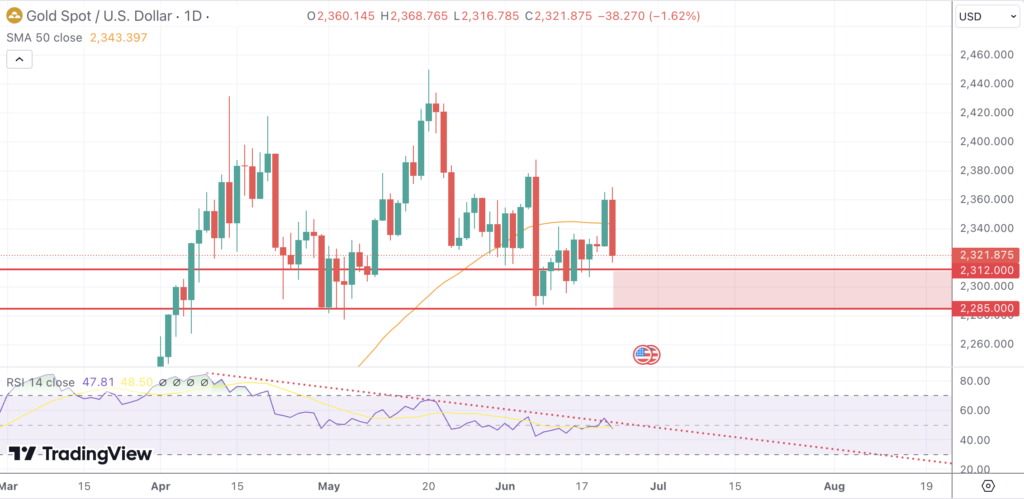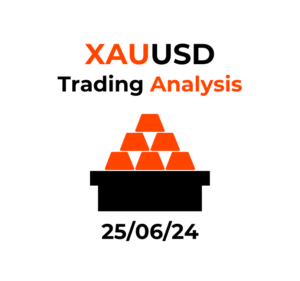Key Takeaways
- Gold prices have attracted buyers amid Fed rate cut hopes and safe-haven flows.
- The Fed’s hawkish stance contrasts with market expectations of two rate cuts this year.
- Geopolitical tensions and political uncertainty in Europe support gold as a safe-haven asset.
- Technical support for gold is around $2,312, with resistance near $2,341-2,342.
- Upcoming US economic data, including the final Q1 GDP print and Core PCE, will be crucial in shaping market sentiment and Fed policy expectations.
Market Dynamics and Recent Performance
Gold prices have seen renewed interest from buyers amid hopes of Federal Reserve rate cuts and safe-haven flows. Despite the Fed’s hawkish stance, which suggested only one rate cut in 2024, markets are still pricing in the possibility of two cuts this year due to signs of easing inflationary pressures. This expectation has weighed on US Treasury bond yields, providing some support for gold. Additionally, geopolitical tensions and political uncertainty in Europe have contributed to a softer risk tone, further supporting gold as a safe-haven asset.
Technical and Fundamental Influences
From a technical perspective, gold prices recently experienced a failed breakout through the 50-day Simple Moving Average (SMA) resistance. The subsequent decline stalled near a two-week-old ascending trend-line support around $2,312, which now serves as a crucial pivotal point. Oscillators on the daily chart have started drifting into negative territory, indicating potential vulnerability to further declines. A convincing break below this support could push gold prices below the $2,300 mark, potentially retesting the monthly low around $2,285 and exposing the 100-day SMA support near $2,247-2,246.

On the upside, immediate resistance is near the 50-day SMA at $2,341-2,342, with further resistance around $2,368-2,369. Sustained strength beyond this level could lift gold towards the $2,387-2,388 intermediate hurdle and potentially the $2,400 mark. A break above $2,400 would negate the near-term negative outlook and aim back towards the all-time peak around $2,450.
Fundamentally, gold is influenced by mixed signals from the Federal Reserve. Some officials have indicated that a single rate cut might be appropriate by the end of the year, while others stress the need for more data. This uncertainty, combined with strong US economic data, has kept market participants on edge. Geopolitical tensions in the Middle East and political uncertainties in Europe, particularly with upcoming elections, have also provided support for gold as a safe-haven asset. Economic challenges in China, such as a slowdown in industrial output, have contributed to a risk-off sentiment, further underpinning gold prices.
Looking Forward
In the coming week, key US economic reports, including the final Q1 GDP print and the Personal Consumption Expenditures (PCE) Price Index, will be closely watched. These reports, along with various Federal Reserve speakers, could significantly impact gold prices. Traders should pay attention to signals about economic growth, inflation, and potential shifts in monetary policy. The Core PCE, in particular, will be critical in shaping Fed policy and market sentiment.

